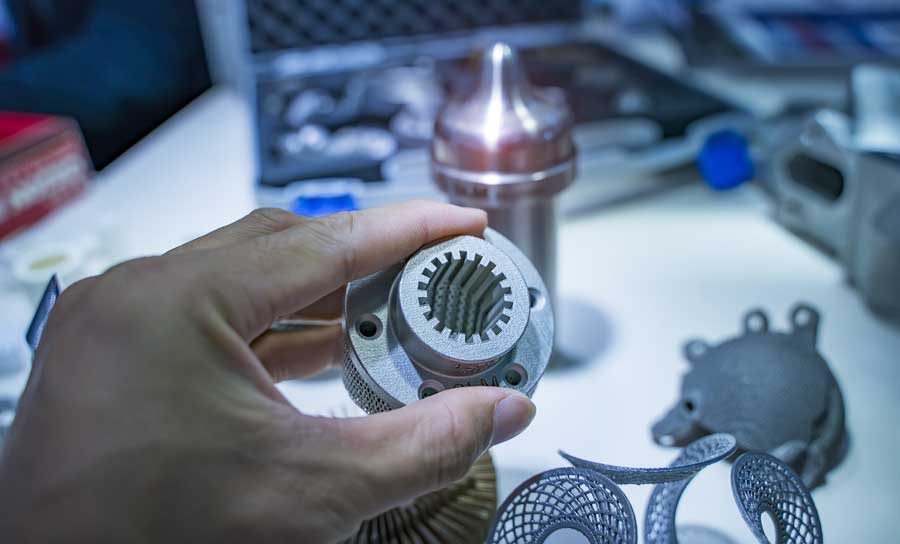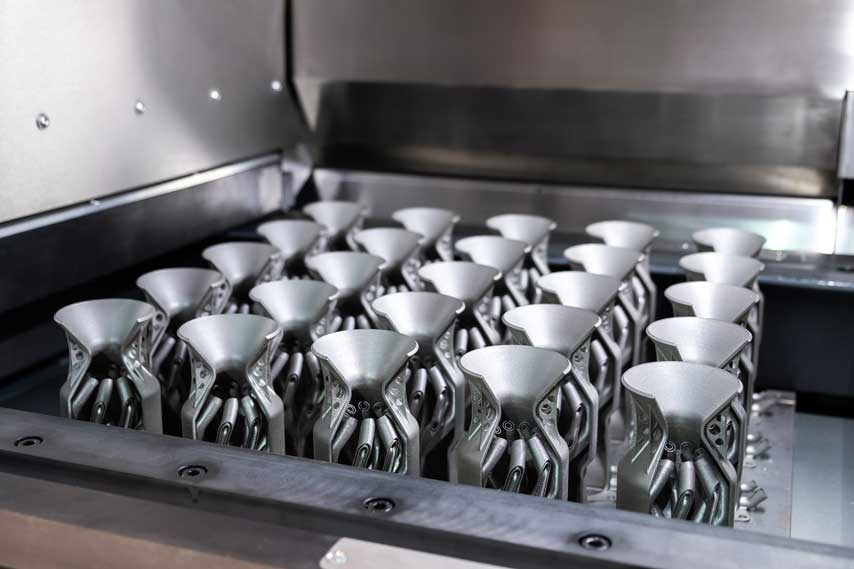Industrial Additive Manufacturing: A Guide to Reducing Your Costs
Industrial additive manufacturing, also known as professional 3D printing, is revolutionizing production methods. This disruptive technology not only enables the design of complex parts but also transforms inventory management, supply chains, and overall profitability for manufacturers. In this guide, discover how to leverage additive manufacturing to cut costs, increase agility, and accelerate your transition toward a more sustainable industry.

The Economic Benefits of Additive Manufacturing
Reducing Production Costs
- Material optimization: Unlike traditional methods, industrial 3D printing uses only the exact material needed. Scrap costs are drastically reduced, especially for expensive materials such as superalloys or advanced composites.
- No tooling required: Additive manufacturing eliminates molds and dedicated tooling, avoiding heavy investments—particularly valuable for prototypes, pre-series, or unique parts.
- Cost-efficient customization: Design adjustments generate no additional costs, making personalization feasible without blowing up budgets.
Lower Physical Stock and Logistics Costs
- On-demand production: Manufacture only what you need, when you need it. The result: less capital tied up and reduced storage space requirements.
- Digitalized inventories: Store your 3D models (STL, STEP, 3MF) in a secure cloud instead of keeping physical parts. This reduces risks of obsolescence and waste.
- Simplified logistics: Decentralized production reduces transport, handling, and buffer stock requirements.
Optimizing the Product Lifecycle
- Extended part availability: With digital archiving, obsolete or low-turnover components can be produced on demand, extending equipment lifetimes.
- Scalability and agility: Design changes are integrated at no extra cost, enabling rapid adaptation to market or regulatory shifts.
- Reduced environmental footprint: Industrial additive manufacturing helps cut Scope 3 emissions and supports CSRD goals by reducing transport and material waste.
Real Use Cases: How Companies Reduce Costs
Maintenance, Repair, and Operations (MRO)
- Immediate spare parts: Aerospace and rail manufacturers use additive manufacturing to produce critical parts on demand—even beyond the equipment’s original lifecycle.
- Example: A French public transport operator cut maintenance costs by 60% by locally printing obsolete spare parts, avoiding long lead times and costly downtime.
- Reduced safety stock: Dormant warehouse items are replaced with digital files ready for printing, freeing capital and space.
Small-Series and Industrial Customization
- Flexible production: 3D printing is ideal for small series, pre-series, or customized parts, where tooling costs can’t be amortized across large volumes.
- Example: An automotive subcontractor uses additive manufacturing to create custom low-cost tooling, speeding up new model launches by 40%.
- Rapid market response: Faster time-to-market enables new opportunities without waiting for tool or mold fabrication.

Streamlining the Supply Chain
- Localized and decentralized production: Companies can trigger manufacturing at the site closest to demand, reducing delivery times and transport costs.
- Example: In the medical sector, a prosthetics manufacturer 3D prints implants on several regional sites, cutting delivery lead times by two-thirds while optimizing stock management.
- Reduced stockouts and overstock: The flexibility of additive manufacturing allows real-time production adjustments to match demand, avoiding costly shortages and overages.
Integrating Additive Manufacturing into Your Industrial Strategy
Identify High-Value Applications
- Needs analysis: Target parts where industrial additive manufacturing delivers economic or technical advantages: complex geometries, low volumes, critical or obsolete components.
- TCO and ROI assessment: Use analytics to compare total cost of ownership between traditional and additively manufactured approaches.
- Example: A food-processing SME reduced tooling TCO by 30% thanks to 3D printing, eliminating the need for seasonal stock management.
Rely on Scalable Digital Solutions
- Secure archiving and management: SaaS platforms like GhostMatter securely store 3D files, ensuring traceability and protection of technical data.
- On-demand production activation: Trigger manufacturing at the most suitable site (certified, closest to demand), without re-entry or IT re-implementation.
- Industrial ecosystem integration: ERP/PLM connectors, real-time quality management, and marketplaces to monetize your digital models—all designed for smooth, progressive adoption.
Measure and Track Financial Benefits
- Key KPI monitoring: Track industrial 3D printing’s impact through TCO, ROI, delivery lead times, equipment availability, and Scope 3 reduction.
- Example metrics:
- Lower obsolescence rates
- Reduced capital tied up in inventory
- Lower logistics costs
- Improved customer service levels
- Continuous improvement: By analyzing results, you can gradually extend additive manufacturing scope and identify new optimization opportunities.
Conclusion
Industrial additive manufacturing is more than a technical innovation: it is a new paradigm for flexible, sustainable, and competitive production. By adopting digital solutions like GhostMatter, you transform your stock into digital capital, enable on-demand manufacturing, and control every step of your value chain. Whether you are an SME or a mid-cap, professional 3D printing helps you reduce costs, accelerate innovation, and strengthen your ESG commitments. Act now to position your company at the forefront of the industry of the future.




